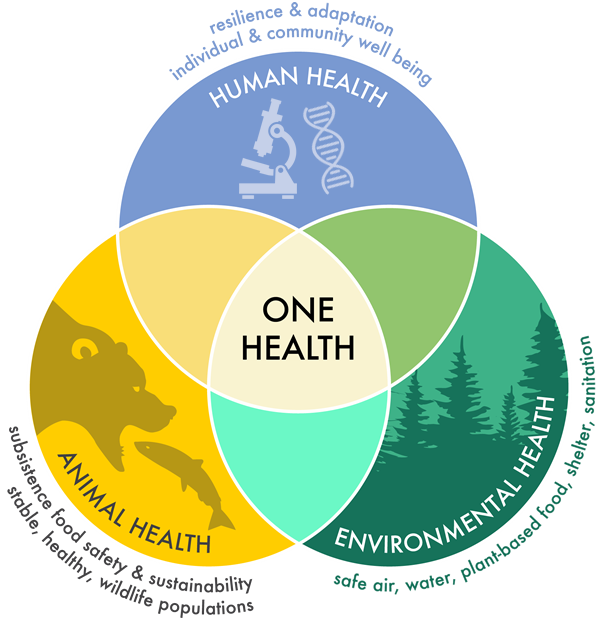Syllabus: GS2/ Health, Governance
Context
- The first State and Union Territory Engagement Workshop under National One Health Mission (NOHM) was conducted, charting a collaborative path forward for strengthening India’s integrated One Health approach.
About
- The workshop was chaired by the Principal Scientific Adviser (PSA) bringing together a diverse array of stakeholders.
- Key Highlights:
- The workshop underscored syndromic surveillance and mock drills like Vishanu Yuddh Abhyaas for preparedness.
- Gujarat and Kerala, nominated to the mission’s governance committee, presented their progress in building One Health infrastructure.
- The launch of a Youth Engagement Program to harness the energy and innovation of the country’s youth through hackathons and digital campaigns.
- One Health Dashboard: A central dashboard was launched to monitor and map state and central initiatives.
What is the One Health Approach?
- One Health is an integrated, unifying approach that aims to sustainably balance and optimize the health of people, animals and ecosystems.
- It recognizes that the health of humans, domestic and wild animals, plants, and the wider environment (including ecosystems) are closely linked and interdependent.

National One Health Mission
- The National One Health Mission (NOHM) exemplifies the Government of India’s commitment to leveraging cutting-edge science in real-world settings to anticipate and mitigate public health risks.
- The key pillars of the NOHM are:
- Technology enabled integrated surveillance across sectors.
- National network of Biosafety Level 3 (BSL-3) laboratories (for testing high-risk or unknown pathogens).
- Collaborative and integrated R&D for medical countermeasures including vaccines, diagnostics, and therapeutics for human-animal-wildlife-livestock health.
- Data integration across sectors.
- Training and capacity building in all spheres related to One Health.
Challenges in Operationalizing One Health
- Intersectoral Coordination: Fragmented institutional silos between human, animal, and environmental health bodies.
- Lack of Trained Workforce: Shortage of epidemiologists, zoonotic disease experts, and data scientists at the district level.
- Infrastructural Disparities: States vary in surveillance capabilities and digital health integration.
- Data Privacy & Sharing: Ensuring secure and effective real-time data flow between sectors remains a concern.
Way Ahead
- Decentralised Planning: States should localize the One Health model based on regional risks (e.g., zoonotic hotspots).
- Institutional Mechanisms: Permanent state-level One Health Cells and convergence with existing bodies like State Disaster Management Authorities (SDMAs).
- Public Awareness: Leverage campaigns and youth engagement to increase awareness of One Health.
- The states/UT’s should consider creating their own One Health dashboards and websites and link it with the central dashboard/website.
Source: PIB
Previous article
NHAI Releases First-Ever Asset Monetisation Strategy Document
Next article
Hate Speech